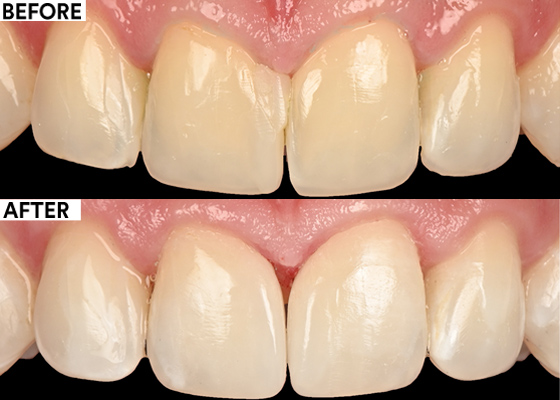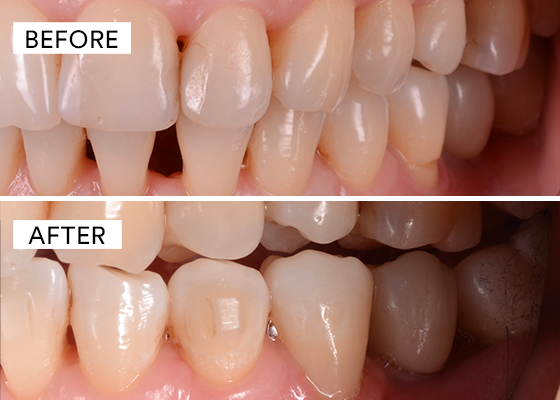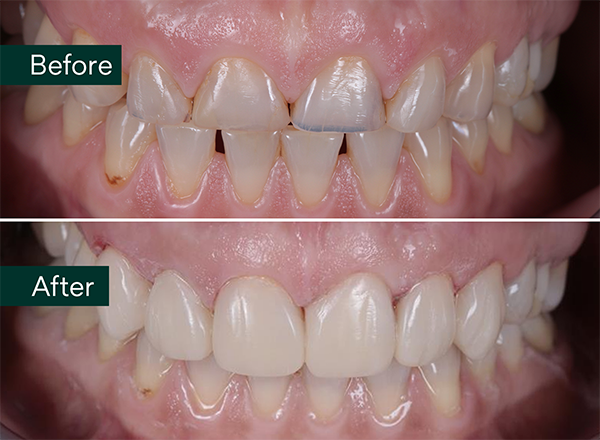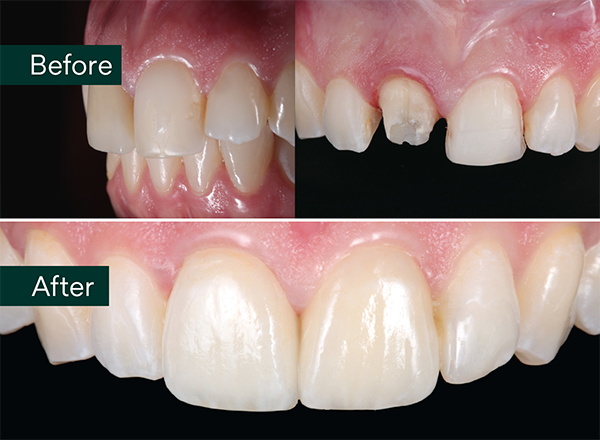Clinical Case: Easily Matching a Class V Non-Cervical Carious Lesion
Using 3M™ Filtek™ Easy Match Universal Restorative, and 3M™ Scotchbond™ Universal Plus Adhesive.


Using 3M™ Filtek™ Supreme XTE Universal Restorative.
Patient presented concern of an old diastema closure, desiring to have them replaced for a “better smile”. Patient wanted a conservative option. Advantages and disadvantages of whitening their teeth, crowns, porcelain veneers and conservative build-ups with direct resin composite were discussed. The patient opted for direct resin bonded restorations.
Modern composite resins offer a range of opacities that bring natural looking results for patients who want less invasive dentistry. Results are rewarding for both the patient and the dentist.
Dr. Vargas shares his approach to accessible conservative options for a busy dental practice.

Rubber dam was placed, the old restoration removed and the preparation air-abraded.

After etchant application, 3M™ Scotchbond™ Universal Plus Adhesive was applied and light cured.

Placement of 3M™ Filtek™ Supreme Ultra Universal Restorative, Shade A1E.

3M™ Filtek™ Supreme Flowable Restorative is placed to improve adaptation of Universal Restorative.

Blending and shaping the composite materials using a #2 brush.

Light curing all surfaces using 3M™ Elipar™ DeepCure-S LED Curing Light.

Teeth contoured with 3M™ Sof-Lex™ Extra Thin Contouring and Polishing Disc.

Final polishing using HiLuster Polishing Kit.

Final result.
Refer to Instructions for Use (IFU) for complete product information. Results may vary.

Using 3M™ Filtek™ Easy Match Universal Restorative, and 3M™ Scotchbond™ Universal Plus Adhesive.

Using 3M™ Scotchbond™ Universal Plus Adhesive, 3M™ Filtek ™ Universal Restorative.

Using 3M™ Scotchbond™ Universal Plus Adhesive, 3M™ RelyX™ Universal Resin Cement, and 3M™ RelyX™ Try-in Paste.